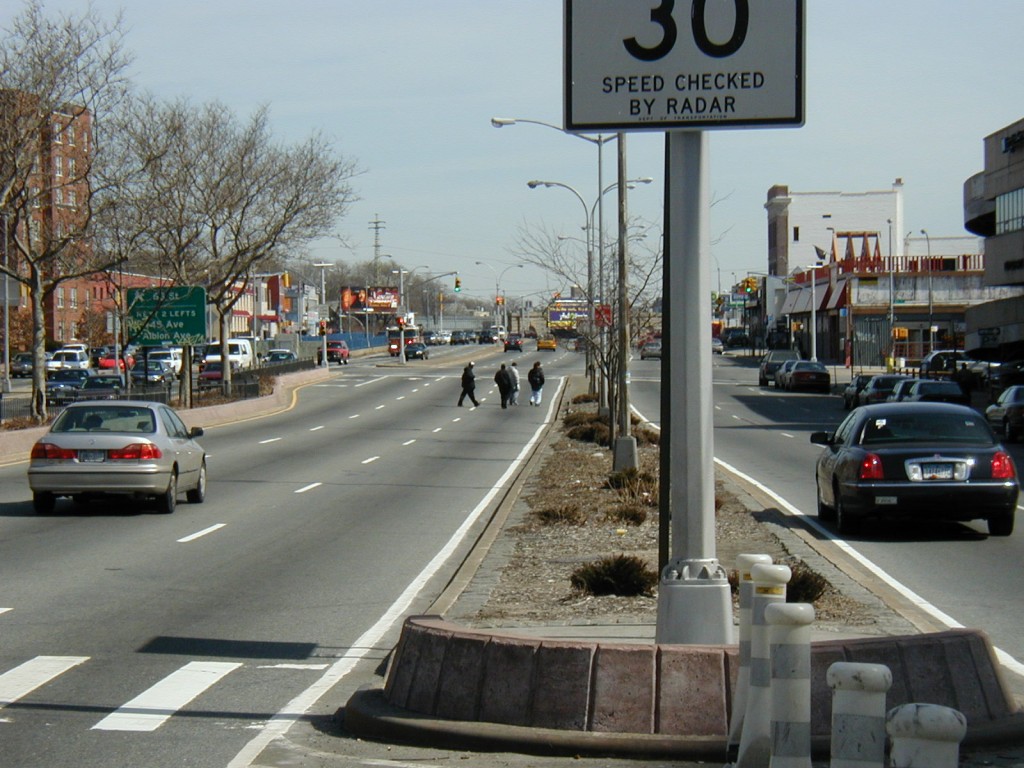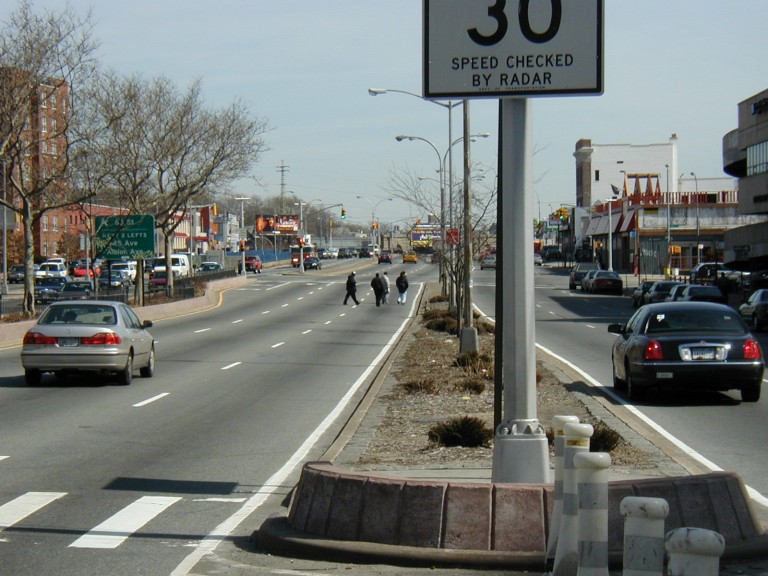For 14 years, Peter Beadle has lived just off Queens Boulevard in Rego Park. He has navigated its sidewalks, ridden his bicycle on it, and seen what is notoriously called the “Boulevard of Death” evolve into a slightly less dangerous roadway in recent years.
Despite all of this, the longtime resident is reticent enough – and cognizant enough of the deaths and injuries that have happened along the road that runs through about half the borough, from Long Island City to Jamaica – that he rarely wants to venture across the boulevard.

A group of Queens residents is working to improve Queens Boulevard, infamously known as the “Boulevard of Death.” Photo Courtesy of Transportation Alternatives
“I live on the south side of Queens Boulevard, and I don’t want to go to the north side,” Beadle said. “Ben’s Best Deli – one of the most amazing delis in the city – and probably the country – is just off the end of my street, and in the past 14 years I’m ashamed to admit I’ve never been there. I don’t want to go to Queens Boulevard – I want that to change.” Residents and legislators have long advocated for changes to Queens Boulevard, but the chorus of voices calling for a safer roadway is growing louder – and individuals, like Beadle, are urging the city Department of Transportation to make a series of improvements to one of Queens’ longest roads, much of which is about 12 lanes wide but expands to 16 lanes near Yellowstone Boulevard in Forest Hills. Transportation Alternatives, an organization for which Beadle volunteers, is collecting signatures for a petition it plans to deliver to community boards that represent the area around the boulevard. As part of the petition, which has garnered about 1,000 signatures so far, the community boards will be asked to urge the DOT to implement such measures as protected bicycle lanes, dedicated bus lanes and better protected areas for pedestrians.
“We’ve been working on Queens Boulevard for the past decade, and our vision is to transform the street into what we call a complete street – a street that accommodates everyone,” said Miller Nuttle, manager of campaigns and organizing at Transportation Alternatives.
Nuttle and Beadle noted there have been changes made to Queens Boulevard in recent years, in part at the urging of Councilwoman Karen Koslowitz (D-Forest Hills) – including the implementation of fencing to keep people from jaywalking and countdown clocks at crosswalks.
“But it’s a very wide street that, under its current design, is designed in favor of automobiles,” Beadle said. “It has several features that share more in common with highways than with a street running through a densely populated residential area… People build up a lot of speed and treat it like a highway. The effect of that has been an incredible number of accidents and a lot of deaths.”
The most recent death on Queens Boulevard was that of Alexander Martinez, a father of two and an electrician who was killed in a hit-and-run accident while he was riding his bicycle from Jamaica Estates to his job in Long Island City in September 2012.
Queens Boulevard runs through a number of neighborhoods, including Long Island City, Sunnyside, Woodside, Elmhurst, Rego Park, Forest Hills, Kew Gardens, Briarwood, and Jamaica – and while residents said they’d like to see the entire boulevard made safer, they have been conducting much of their outreach in Forest Hills, Rego Park and Sunnyside because of the conditions of the boulevard in those areas.
In addition to elected officials and other area leaders, Transportation Alternatives is working with parent associations that have been concerned about children crossing the boulevard to get to school.
And last Sunday, a group of volunteers coordinated a petition drive on Austin Street and Continental Avenue in Forest Hills.
Advocates said it wouldn’t be impossible for the DOT to change Queens Boulevard into a place where people can feel safe bicycling – or even just crossing the road to go shopping.
“Eastern Parkway in Brooklyn is, for most of its length, the same right of way as Queens Boulevard – 200 feet wide – but Eastern has more intersections and you have an off-road bikeway,” Beadle said. “You have so many more trees and grass. It’s a much more liveable space. Why can’t we have that here in Queens?”
By Anna Gustafson

